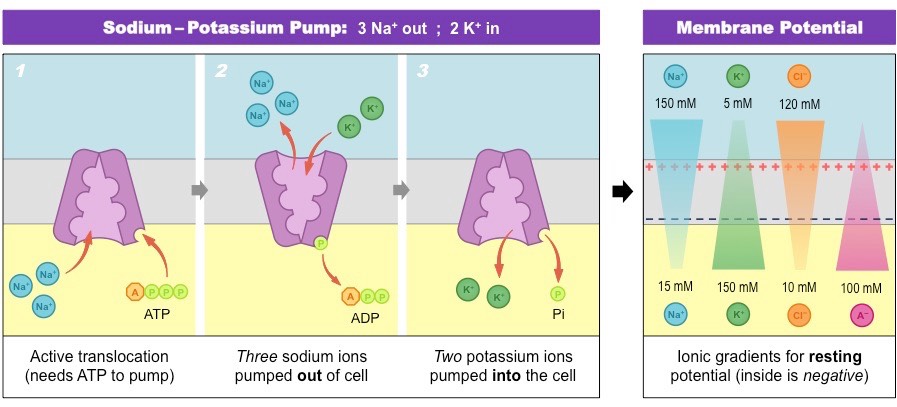![]()
Understanding:
• Neurons pump sodium and potassium ions across their membranes to generate a resting potential
Neurons generate and conduct electrical signals by pumping positively charged ions (Na+ and K+) across their membrane
- The unequal distribution of ions on different sides of the membrane creates a charge difference called a membrane potential
A resting potential is the difference in charge across the membrane when a neuron is not firing
- In a typical resting potential, the inside of the neuron is more negative relative to the outside (approximately –70 mV)
The maintenance of a resting potential is an active process (i.e. ATP dependent) that is controlled by sodium-potassium pumps
- The sodium-potassium pump is a transmembrane protein that actively exchanges sodium and potassium ions (antiport)
- It expels 3 Na+ ions for every 2 K+ ions admitted (additionally, some K+ ions will then leak back out of the cell)
- This creates an electrochemical gradient whereby the cell interior is relatively negative compared to the extracellular environment (as there are more positively charged ions outside of the cell and more negatively charged ions inside the cell)
- The exchange of sodium and potassium ions requires the hydrolysis of ATP (it is an energy-dependent process)
Generation of a Resting Potential

